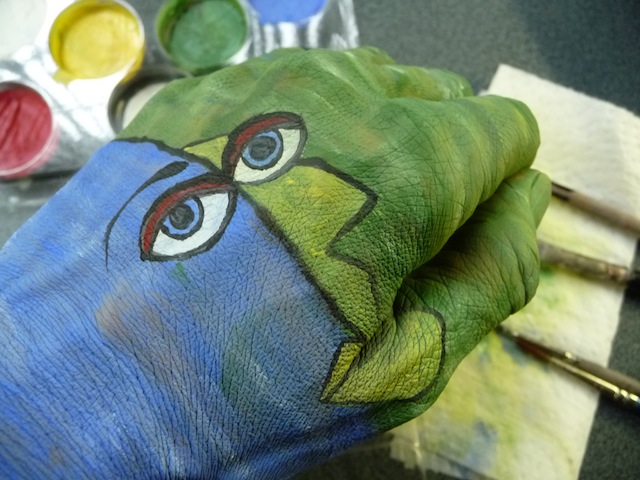The Enigmatic World of Edward Hopper
Edward Hopper, an iconic American realist painter, is celebrated for his captivating portrayals of modern American life. Born in 1882, Hopper’s distinctive style and masterful use of light and shadow have left a lasting impact on the art world.
A Glimpse into Hopper’s Artistic Vision
Hopper’s paintings often depict scenes of urban and rural landscapes, as well as interiors with solitary figures. His works convey a sense of isolation and introspection, inviting viewers to contemplate the complexities of human existence.
The Play of Light and Shadow
One of the defining features of Hopper’s art is his skillful manipulation of light and shadow. The interplay of light in his compositions creates a mood of mystery and melancholy, adding depth to his narrative storytelling.
Influence on Modern Art
Hopper’s influence extends beyond his lifetime, inspiring generations of artists to explore themes of alienation, solitude, and the changing landscape of America. His work continues to resonate with audiences worldwide, capturing the essence of a bygone era while remaining timeless in its relevance.
Legacy and Recognition
Throughout his career, Edward Hopper received numerous accolades and awards for his contributions to the art world. Today, his paintings are cherished in museums and private collections around the globe, serving as a testament to his enduring legacy as a visionary artist.
Exploring Hopper’s World
Step into the enigmatic world of Edward Hopper through his evocative paintings that offer a glimpse into the human experience with all its complexities and contradictions. Discover the beauty in solitude and the poetry in everyday life through the eyes of this remarkable artist.
Edward Hopper: The Iconic American Realist Painter Whose Masterful Light and Shadow Captivate and Inspire
- Iconic American realist painter
- Masterful use of light and shadow
- Captivating portrayals of modern American life
- Distinctive style that resonates with viewers
- Influential in exploring themes of alienation and solitude
- Legacy as a visionary artist continues to inspire generations
- Artworks cherished in museums and private collections worldwide
Exploring the Criticisms of Edward Hopper: Limited Palette, Themes of Isolation, and Subjective Interpretations
- Limited color palette may not appeal to viewers seeking vibrant and colorful artwork.
- Some critics argue that Hopper’s paintings can evoke feelings of loneliness and isolation, which may not resonate with all audiences.
- Interpretation of Hopper’s work can be subjective, leading to varying opinions on the meaning and intent behind his paintings.
Iconic American realist painter
Edward Hopper is renowned as an iconic American realist painter, celebrated for his masterful ability to capture the essence of modern American life with unparalleled realism and depth. Through his evocative paintings, Hopper skillfully portrays the nuances of urban and rural landscapes, as well as the solitude and introspection of human figures in their everyday environments. His distinct style and keen attention to detail have solidified his status as a pioneering figure in American art history, influencing generations of artists and leaving a lasting impact on the art world.
Masterful use of light and shadow
Edward Hopper’s masterful use of light and shadow in his artworks is a defining feature of his unique style. Through skillful manipulation of light, Hopper creates a sense of drama, mood, and depth in his compositions. The interplay between light and shadow adds a layer of complexity to his scenes, evoking emotions and inviting viewers to explore the nuances of his narrative storytelling. Hopper’s ability to capture the subtle nuances of light and shadow not only enhances the visual impact of his paintings but also imbues them with a sense of mystery and contemplation, making his work truly captivating and timeless.
Captivating portrayals of modern American life
Edward Hopper’s captivating portrayals of modern American life offer a poignant and introspective glimpse into the essence of the era. Through his masterful use of light, shadow, and composition, Hopper captures the mood and atmosphere of everyday scenes with a sense of timelessness. His ability to convey the nuances of human emotion and isolation within urban and rural landscapes resonates deeply with viewers, inviting them to reflect on the complexities of contemporary society. Hopper’s paintings serve as windows into a world that is at once familiar and enigmatic, showcasing his unparalleled talent for capturing the essence of modern American life in all its beauty and complexity.
Distinctive style that resonates with viewers
Edward Hopper’s distinctive style captivates viewers with its timeless appeal and emotional depth. Through his masterful use of light, shadow, and composition, Hopper creates evocative scenes that resonate with audiences on a profound level. His ability to capture the essence of solitude, introspection, and the human experience in his art establishes a powerful connection with viewers, inviting them to contemplate the complexities of life and society. Hopper’s unique visual language not only leaves a lasting impression but also sparks introspection and reflection among those who engage with his work.
Influential in exploring themes of alienation and solitude
Edward Hopper’s profound influence in exploring themes of alienation and solitude within his art is undeniable. Through his masterful use of light, shadow, and composition, Hopper skillfully captured the essence of isolation and introspection in his paintings. His depictions of solitary figures in urban and rural settings evoke a sense of loneliness and contemplation, inviting viewers to reflect on the complexities of human existence. Hopper’s exploration of these themes resonates deeply with audiences, making him a pioneering figure in portraying the emotional depth of solitude through visual storytelling.
Legacy as a visionary artist continues to inspire generations
Edward Hopper’s legacy as a visionary artist continues to inspire generations with his profound ability to capture the essence of human emotion and the nuanced beauty of everyday life. Through his masterful use of light, shadow, and composition, Hopper created a body of work that transcends time and resonates with audiences across the globe. His evocative paintings serve as a timeless reminder of the power of art to evoke introspection, contemplation, and a deep connection to the human experience. Hopper’s enduring influence on contemporary artists and art enthusiasts is a testament to his unparalleled vision and artistic brilliance.
Artworks cherished in museums and private collections worldwide
Edward Hopper’s legacy as an acclaimed artist is exemplified by the widespread admiration and recognition his artworks have garnered, being cherished in museums and private collections around the world. His captivating portrayals of modern American life, characterized by a unique play of light and shadow and a profound sense of introspection, have solidified his position as a masterful realist painter whose work transcends time and cultural boundaries. The enduring appeal of Hopper’s paintings lies in their ability to evoke deep emotions and contemplation, making them prized possessions for art enthusiasts and collectors globally.
Limited color palette may not appeal to viewers seeking vibrant and colorful artwork.
While Edward Hopper’s limited color palette is a hallmark of his style and artistic vision, it may not resonate with viewers who seek vibrant and colorful artwork that exudes energy and dynamism. Hopper’s subdued tones and restrained use of color evoke a sense of quiet contemplation and introspection, which may not align with the preferences of those who prefer more visually stimulating and lively compositions. However, for those who appreciate the subtle nuances and emotional depth conveyed through Hopper’s restrained palette, his works offer a unique opportunity to explore the beauty of simplicity and understated elegance in art.
Some critics argue that Hopper’s paintings can evoke feelings of loneliness and isolation, which may not resonate with all audiences.
Some critics argue that a con of Edward Hopper’s paintings is their tendency to evoke feelings of loneliness and isolation, which may not resonate with all audiences. While Hopper’s masterful use of light and shadow creates a sense of mystery and contemplation, some viewers may find his portrayal of solitude unsettling or melancholic. The introspective nature of his work can be seen as a double-edged sword, as it elicits deep emotions in some while alienating others who seek more uplifting or optimistic themes in art.
Interpretation of Hopper’s work can be subjective, leading to varying opinions on the meaning and intent behind his paintings.
Interpretation of Edward Hopper’s work can be subjective, giving rise to a wide range of opinions regarding the meaning and intent behind his paintings. Viewers often bring their own experiences, emotions, and perspectives to Hopper’s art, leading to diverse interpretations that may differ significantly from one another. This subjectivity adds layers of complexity to Hopper’s work, inviting viewers to engage with his paintings on a personal level and derive their own unique insights and understandings from the enigmatic scenes he portrays.





